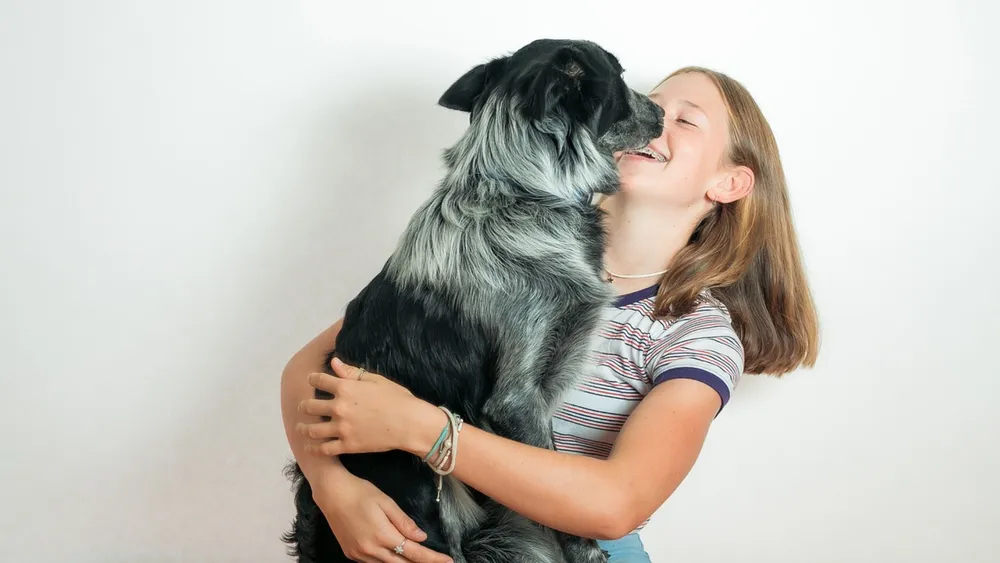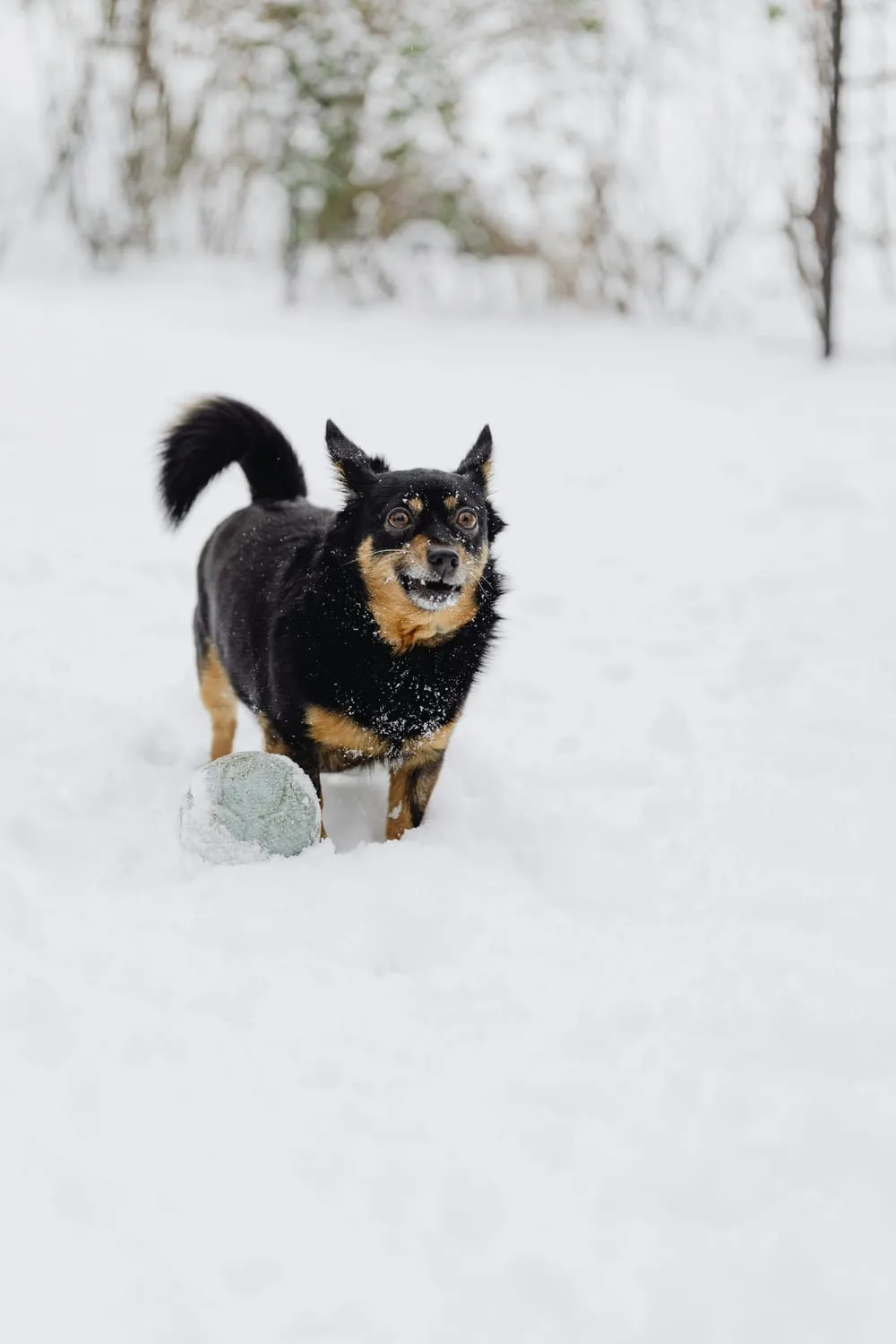Compact, energetic, and companionable, the Lancashire Heeler captivates those looking for a unique pet. If you’re considering this breed’s striking blend of affection and independence, our guide delivers an inside look into the world of Lancashire Heelers - perfect for evaluating if this AKC-recognized dog could be your newest family member.

Key Takeaways
- The Lancashire Heeler achieved full recognition from the American Kennel Club in 2024, thanks to the efforts of the United States Lancashire Heeler Club which standardized the breed and encouraged participation in dog sports to meet the AKC’s rigorous criteria.
- Lancashire Heelers are low-maintenance, high-energy dogs with a distinctive coat, requiring minimal grooming and a good amount of daily exercise to prevent boredom and promote well-being, including both physical and mental activities.
- While generally healthy with a lifespan of 12-15 years, Lancashire Heelers may be susceptible to specific genetic conditions such as primary lens luxation and Collie eye anomaly, and their diet should be meat-based, meeting AAFCO standards, and monitored to prevent weight issues.
The Lancashire Heeler's Journey to AKC Recognition
The American Kennel Club (AKC) recognition of the Lancashire Heeler reflects the breed and its enthusiasts’ tenacity. The United States Lancashire Heeler Club (USLHC) has been instrumental, guiding the breed’s journey since its inception in 2007.
The Lancashire Heeler, a versatile and spirited herding breed, earned its place in the AKC’s Miscellaneous Class in 2017. By 2024, it had fulfilled the rigorous criteria required for full AKC recognition, including breed standardization, registration numbers, and participation in dog sports, making it the only AKC breed to achieve this status at that time.
This impressive journey culminated in the breed’s official recognition in 2024, paving the way for the preservation and growth of Lancashire Heelers.
The Breed Standardization Process
As updated by the Kennel Club in April 2008, the breed standard for the Lancashire Heeler serves as the blueprint for the perfect specimen. The breed is described as:
- Small, powerful, and an energetic worker
- Built for functionality and soundness
- Wide skull
- Almond-shaped eyes
- Alert or erect ears
- Strong jaws and scissor bite
Every feature is meticulously outlined in the same breed standard.
The ideal Lancashire Heeler stands at 30 cm for males and 25 cm for females at the shoulder. Dogs are judged against this standard at shows, though some flexibility is allowed for individual variations. This comprehensive breed standard emphasizes the Lancashire Heeler’s robust nature and distinctive appearance.
From Rare Breed to Recognized Member
Driven by the United States Lancashire Heeler Club (USLHC), the Lancashire Heeler’s evolution from a rare breed to a recognized member of the AKC showcases perseverance and dedication. Since 2007, the USLHC has been a driving force behind the breed’s recognition, advancing breed education and understanding among the public and judges. Achieving AKC recognition opened doors for Lancashire Heelers to feature in thousands of dog shows across the United States, raising the breed’s profile and fostering greater interest.
Despite these strides, the Lancashire Heeler remains a rare breed, and its distinctive identity often prompts curiosity at dog shows.
The Distinctive Look of the Lancashire Heeler
With their unique appearance, Lancashire Heelers are truly one-of-a-kind. Their coat is a fine undercoat covered by a weather-resistant, short, thick, hard, flat topcoat, offering a dense and waterproof shield that is low-maintenance. Their coat comes in black and tan or liver and tan color variations, adding to their distinctive look.
The breed’s almond-shaped eyes and ears, either upright or tipped, complete their unique appeal.

Coat Care and Grooming Needs
The Lancashire Heeler’s coat is not just distinctive; it’s also easy to care for. Regular brushing keeps the coat healthy and provides a bonding time between the owner and the dog, especially during shedding periods. Moreover, they require infrequent baths, only when they are particularly dirty or smelly.
The straightforward, hassle-free coat care makes Lancashire Heelers an ideal selection for those favoring low-maintenance pets.
Recognizing the Heeler Smile
One of the most endearing traits of the Lancashire Heeler is the ‘Heeler Smile’. This smile-like expression, where the dog draws back its lips akin to a human smirk, is unique to the breed. It’s an expression of their friendly disposition and good mood, making the ‘Heeler Smile’ a charming feature that’s sure to win hearts.
Lancashire Heeler Temperament and Sociability
Lancashire Heelers boast a personality that matches their attractive appearance. As medium to high energy dogs, they are intelligent, quick to learn new tasks, and full of life. They are also affectionate, easily fitting into family life and showing a balance between being demanding of attention and laid back.
Once familiar, they are friendly, often greeting new people with licks and kisses. However, their friendly yet independent nature requires careful socialization to foster positive interactions with other pets.
A Family Pet with a Loyal Heart
Lancashire Heelers serve as loyal companions, not just pets. They are known for their strong loyalty to household members, often developing a particular attachment to one favored person.
This loyalty combined with their affectionate nature makes family dogs excellent pets that are always there for their loved ones.
Compatibility with Other Animals
Despite their sociability, interactions between Lancashire Heelers and other pets necessitate thoughtful consideration. Early socialization and training are essential for Lancashire Heelers to live harmoniously with other pets. Here are some tips for socializing your Lancashire Heeler:
- Expose them to a variety of sights, sounds, and environments
- Introduce them to other dogs
- Provide positive experiences with other pets
- Use positive reinforcement training methods
By following these tips, you can help your Lancashire Heeler become well-socialized and comfortable around other pets.
This, coupled with gradual introduction and positive reinforcement, can help Lancashire Heelers get along with other animals in the household.

Exercise and Activity Recommendations for the Active Dog
Lancashire Heelers, being a high-energy breed, need ample exercise for their well-being and contentment. Some activities that they enjoy include:
Regular exercise and mental stimulation are also crucial to avert boredom and destructive behaviors.
Keeping Up with a Spirited Breed
Exuding a spirited nature, Lancashire Heelers need a minimum of one hour of vigorous daily exercise. Providing access to a securely fenced area allows them to engage in necessary free-range exercise.
A daily exercise routine should include 30 minutes of vigorous aerobic activity, supplemented with mental stimulation activities.
Engaging the Dog's Mind
Equal in importance to physical exercise is the engagement of the Lancashire Heeler’s mind. Here are some activities that offer excellent opportunities for mental engagement:
- Interactive toys
- Problem-solving activities
- Dog sports
- Training games that improve focus
- Exposure to new environments
- Indoor activities such as learning new tricks or engaging in hide-and-seek
These activities provide mental and physical exercise, reducing the chance of boredom.
Health and Wellness in Lancashire Heelers
Like any other breed, Lancashire Heelers may be susceptible to certain health conditions despite their robust nature. Regular examinations by a veterinarian are critical for early detection and management of any health problems.
It’s comforting to know that the Lancashire Heeler typically enjoys a lifespan of 12 to 15 years and is generally considered a healthy breed.
Genetic Conditions to Watch For
Certain genetic conditions are known to affect Lancashire Heelers. Primary lens luxation (PLL), an inherited eye abnormality, is one such condition that can lead to lens dislocation, potential glaucoma, and vision loss if untreated. Genetic testing can identify Lancashire Heelers who are carriers of the ADAMTS17 mutation, supporting informed breeding decisions to reduce the incidence of PLL.
Another inherited condition found in Lancashire Heelers is Collie eye anomaly (CEA), with a reported prevalence of 13.7% in a 1996 survey.
Diet and Nutrition for Optimal Health
The Lancashire Heeler’s diet plays a crucial role in their overall health. A high-quality, predominantly meat-based diet that is compliant with AAFCO standards is recommended. Puppies require food that meets AAFCO standards for growth to ensure proper development.
Adult Lancashire Heelers’ feeding requirements vary due to factors such as age, weight, health, and activity level, and should be adjusted with the guidance of a veterinarian. Treats, while an effective training aid, should be given in moderation to avoid contributing to obesity.

Living with a Lancashire Heeler: Insights from Owners
Sharing a home with a Lancashire Heeler offers a rewarding experience brimming with affection, loyalty, and abundant activity. They adapt well to various living environments, including families with children. They can also make excellent watchdogs, alerting their owners to any unfamiliar occurrences or perceived dangers.
However, prospective owners should be prepared for the breed’s high energy levels and need for active play. Their intelligence and potential for escaping also necessitate a secure, escape-proof yard.
Training Your Lancashire Heeler
Raising a well-mannered Lancashire Heeler hinges on effective training. Early training and socialization are crucial for them to behave properly around others and to mitigate undesirable behaviors. Positive reinforcement methods, such as rewards and encouragement, are effective in training Lancashire Heelers.
Their intelligence and attentiveness facilitate quick learning, directly benefiting from consistent and mentally stimulating training sessions.
The Reality of Owning a Herding Breed
Ownership of a herding breed such as the Lancashire Heeler or livestock herding Welsh Corgis brings with it unique characteristics. The breed’s herding instinct can manifest as playful nipping at the heels of people or animals, reflecting their herding lineage.
They also possess a high prey drive, an instinctive desire to chase and potentially capture smaller animals, which is a reflection of their dog breed history as a herding and hunting dog among various dog breeds.
The Legacy and Future of the Lancashire Heeler
In the canine world, the Lancashire Heeler has made an indelible impact. From its origins in England to its recognition by the American Kennel Club as the 201st recognized breed, the Lancashire Heeler has an intriguing story to tell.
The future of the breed depends on the dedication of the Lancashire Heeler community to maintain and promote the breed.
Tracing the Roots: From Northern Wales Meat Market to Modern Day
The Lancashire Heeler’s roots can be traced back to the 17th century, with its exact origins remaining a mystery. Developed from a mix likely to have included herding Welsh Corgis and Manchester Terrier mixes, the breed was utilized on farms to drive livestock to market and to hunt vermin like rats and rabbits. It’s widely believed that the breed originated from Wales and northwestern England.
The breed’s development, including the Manchester Terrier, led to its recognition as a valuable butcher’s dog in West Lancashire, particularly for those handling Australian cattle dog breeds.

The Role of Breed Clubs and Enthusiasts
Promoting the breed and encouraging healthy breeding has been a significant contribution of the United States Lancashire Heeler Club. Since becoming the official AKC Parent Club for the Lancashire Heeler in 2017, the club has been uniting enthusiasts and promoting engagement within AKC Breed Clubs and the AKC Rescue Network.
Their dedication to breed education and advocacy has played a significant role in raising the profile of the Lancashire Heeler.
Summary
To sum up, the Lancashire Heeler is a breed like no other. With its distinctive look, loyal heart, and spirited nature, it’s no wonder that the breed holds a special place in the hearts of its owners. Despite being a rare breed, the Lancashire Heeler’s journey to recognition by the American Kennel Club is a testament to the breed’s enduring charm and the dedication of its enthusiasts. As we look forward to the Lancashire Heeler’s future, the role of breed clubs, enthusiasts, and responsible breeders remains crucial in preserving and promoting this unique breed.
Frequently Asked Questions
- Are Lancashire heelers good pets?
- Yes, Lancashire heelers make good pets as they are affectionate, loyal, intelligent, and adaptable to family life. Their small size also adds to their charm and they are quick to learn new tasks.
- Do Lancashire heelers bark a lot?
- Yes, Lancashire Heelers have a tendency to vocalize a lot, including barking, howling, chirping, and groaning. Be prepared for a dog that has a lot to say!
- Are Lancashire heelers rare?
- Yes, Lancashire Heelers are considered rare, especially outside of the United Kingdom, due to their small population and limited availability worldwide.
- How much do Lancashire heelers cost?
- Lancashire Heelers from breeders usually cost between $1,000 and $1,500, making them quite expensive for potential owners.
- What is the lifespan of a Lancashire Heeler?
- Lancashire Heelers usually live for 12 to 15 years, making them a long-lived breed.